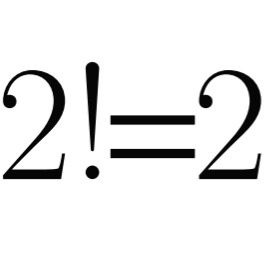집합론, 그 첫 번째 이야기 | 선택공리를 추가한 체르멜로-프랑켈 집합론 ZFC ( Zermelo-Fraenkel Set Theory with Axiom of Choice; ZFC Set Theory )
| 1. Axiom of Extension : 2. Axiom of Emptyset : 3. Axiom Schema of Separation : 4. Axiom of Pairing : 5. Axiom of Union : 6. Axiom of Power Set : 7. Axiom of Infinity : |
The axiom system consisting of a total of seven axioms is called the Zermelo axiom system. This is an axiom introduced by Zermelo to solve the problems of Cantor's accepted collective theory, which implies various paradoxes such as Russell's paradox.
| 8. Axiom of Regularity : 9. Axiom Schema of Replacement : |
These two axioms are axioms that Fraenkel added to complement the Zermelo axiom, and the axiom system consisting of a total of nine axioms is called the ZF axiom system, short for the Zermelo-Fraenckel axiom system. The set theory that begins based on these axiom is referred to as the ZF set theory.
| 10. Axiom of Choice : |
The axiom of choice, AC is consistent with the ZF axiom, and if it is accepted as true, there is no logical problem, and if the AC is denied, there is no logical problem. However, in general, AC is accepted, and there are fields in which the existences of those fields become valid only when AC is true. The Zermelo-Fraenkel axiom system with AC is called the ZFC axiom system, and the set theory that starts based on the ZFC axiom system is also called the ZFC set theory.
'수학 > 집합론 | Set Theory' 카테고리의 다른 글
| 집합론, 그 여섯 번째 이야기 | 함수 (0) | 2020.05.08 |
|---|---|
| 집합론, 그 다섯 번째 이야기 | 관계 (0) | 2020.05.08 |
| 집합론, 그 네 번째 이야기 | 곱집합 ( Cartesian Product ) (0) | 2020.05.07 |
| 집합론, 그 세 번째 이야기 | 집합의 연산 ( Operations of Sets ) (0) | 2020.05.07 |
| 집합론, 그 두 번째 이야기 | 선택공리 ( Axiom of Choice ) (0) | 2020.05.07 |








